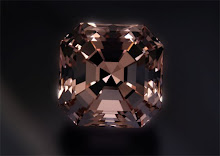I am now preparing for another buying trip - this time to Tanzania. Like the trip to Madagascar, I prefer to work within a buying group. And thus, we are working with a group of 12 participants, not including drivers, guides and our hosts. I know five of the participants personally and they are all involved in the gem trade in North America. The balance of the team are mostly Europeans.
We are hopeful that internet access shall not be a problem.... but we're talking Tanzania. So our expectations are not set high. If I do have access, I will continue to post my findings and stories here in the blog. If not, well.... it will be done as soon as I have internet access again. Hope you are able to follow along.
My flight arrives in Dar es Salaam on the 7th of January, returning to the U.S. roughly around the 21st. So we have about 12 days on the ground, with 6 of them at a mining camp in the Umba Valley. Here's what we're hoping to find:
This is Scapolite I picked up from Tanzania two years ago. Hoping to see some more.

From northern Tanzania, there is a relatively new find of Spessartites. While the Tanzanian goods may not rival the very fine Nigerian rough, they are still attractive in their own right.

One of my favorite gems to cut is Tourmaline. I am very hopeful to find some on this trip.

So now all we have to do is find the rough!



























 This is a vast dig covering several acres as seen in these photos.
This is a vast dig covering several acres as seen in these photos.








 Here's another bus stop, a little closer to the town.
Here's another bus stop, a little closer to the town.

















